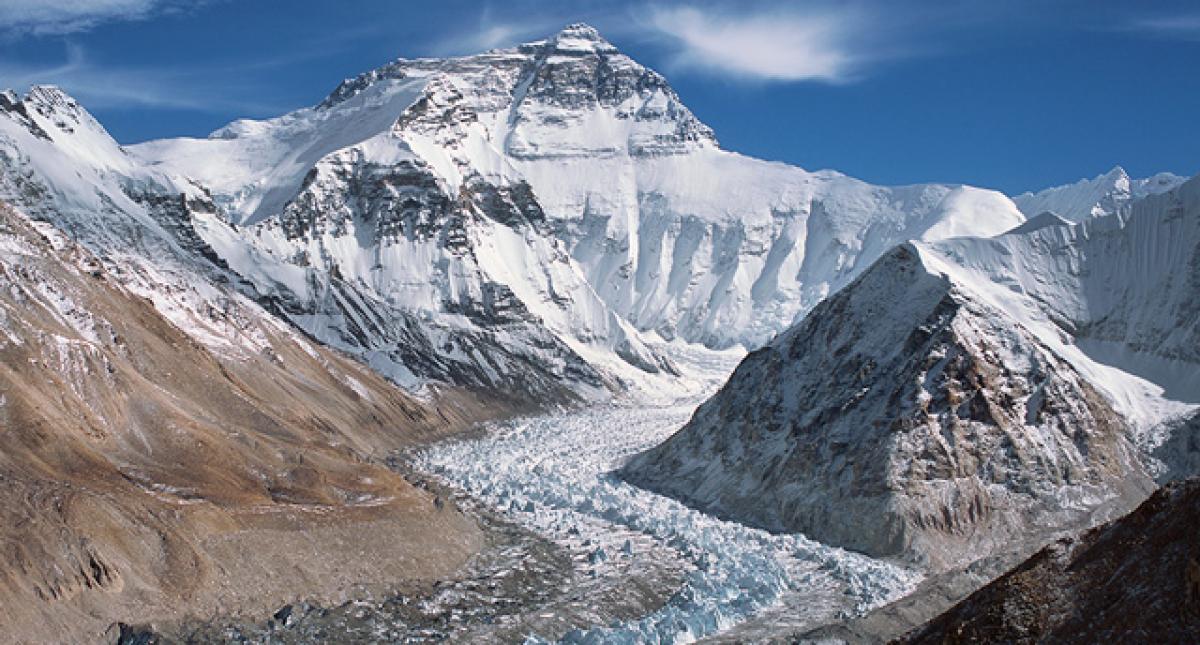Live
- Malaria cases, deaths in India decline by 69pc between 2017-2023: WHO
- ED raids three places in Bengal in online forgery scam case
- Manchu Manoj Questioned by Police Amid Family Dispute
- Bengaluru: IMD Issues Yellow Alert Amid Upcoming Rainfall
- Manchu Vishnu Addresses Media, Clarifies Incident Involving Mohan Babu
- HPCL inks pact with Sea6 Energy to convert seaweed biomass into fuels
- Numaish 2025: Hyderabad’s Grand Exhibition Kicks Off in January – All You Need to Know
- There will be opportunities from every crisis, says CM Chandrababu at collectors' conference
- Women now own 20.5 pc of MSMEs in India, startups surge in tier 2 and 3 cities
- 9 in 10 Indian firms say cloud transformation fuelling AI adoption: Report
Just In

Analysis of satellite images have revealed an \"alarming recession\" of glaciers in the Bhilangna basin of the Garhwal Himalayas from 1965, scientists at the Indian Space Research Organisation (ISRO) have said.
Bengaluru : Analysis of satellite images have revealed an "alarming recession" of glaciers in the Bhilangna basin of the Garhwal Himalayas from 1965, scientists at the Indian Space Research Organisation (ISRO) have said.
Home to 9,575 glaciers (as per a Geological Survey of India inventory) the Himalayas are considered to have the largest concentration of glaciers outside the Polar regions. Snow and melt water from the glaciers is the major source of water for the large river basins, the Indus and the Ganges.
Glacier is an extended mass of ice formed from snow falling and accumulating over the years and moving very slowly, either descending from high mountains, as in valley glaciers, or moving outward from centers of accumulation, as in continental glaciers.
The Bhilangna basin is bounded by the Bhagirati group of glaciers in north and west and the Mandakini group of glaciers in east. The basin supports 33 glaciers, of which Khatling is the largest. The water melt from Khatling and its tributary glaciers in the basin contribute to the source of Bhilangna river – the southernmost tributary of the Bhagirathi.
The ISRO scientists found that this main glacier had receded 4,340 meters since 1965 and had fragmented into multiple valley glaciers resulting in the total loss of 10 per cent of glacier area.
Glacier status in Bhilangna basin was assessed from high resolution imageries obtained in 1965 by the Corona satellite of the United States and comparing these with photos taken in 2014 by ISRO's Cartosat satellite. Additionally, data from the Linear Imaging Self-Scanning Sensor of ISRO's Resourcesat-2 satellite launched in 2016 were also used for the analysis.
"All the glaciers in the basin show significant recession from 1965 to 2014," Babu Govindha Raj, ISRO scientist and lead author of the report, published in the open access publication "Geomatics, Natural Hazards and Risk, 2017," told this correspondent.
"However, recession of the Khatling glacier from 1965 to 2014 is alarming in comparison to that of neighbouring Bhagirathi and Mandakini group of glaciers in the basin," Raj added.
The satellite image interpretation and field evidence show that morphology and dynamics of the Khatling glacier has a strong influence on its faster recession, says the report. "The glacier fragmentation creates smaller glaciers that are more prone to faster melting than the larger trunk glaciers."
South-facing glaciers in the Indian Himalayas show more melting because they receive more solar radiation than those facing north due to their orientation. "In 1965, the ablation area of Khatling trunk glacier orientation was towards the south. This might have enhanced the incidence of solar radiation and resulted in faster melting of the glacier ice," the authors say.
"Furthermore, the debris cover of the Khatling glacier is very thin in comparison to that of other glaciers in Bhilangna and this boosts the solar radiation received by the glacier resulting in more melting."
According to the authors, "The alarming retreat and fragmentation of valley glaciers into smaller glaciers may have profound impact on the future sustainability of Himalayan glaciers and water availability."
The report says that Himalayan glaciers that have been in a state of retreat at various rates since 1960 "are showing reliable evidence of climate change. However, due to lack of meteorological observations and continuous glaciological data, it is difficult to establish the relationship of climate change through glacier dynamics."
By K S Jayaraman

© 2024 Hyderabad Media House Limited/The Hans India. All rights reserved. Powered by hocalwire.com







